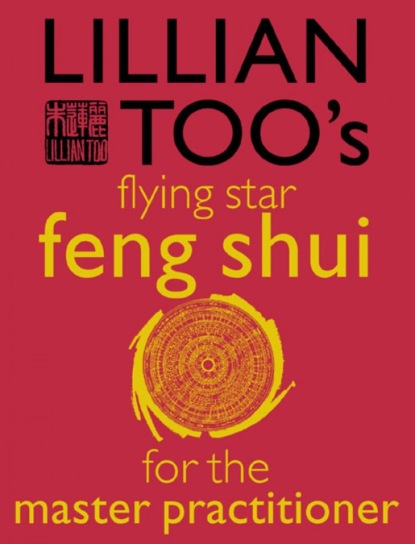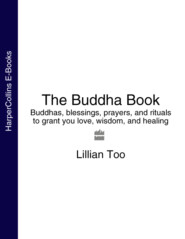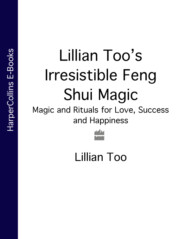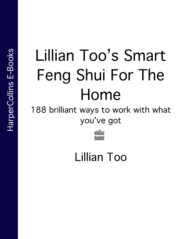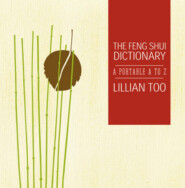По всем вопросам обращайтесь на: info@litportal.ru
(©) 2003-2024.
✖
Lillian Too’s Flying Star Feng Shui For The Master Practitioner
Автор
Год написания книги
2018
Настройки чтения
Размер шрифта
Высота строк
Поля
The trigram Kun moves from north to the southwest, so roads or rivers moving towards the home from the north and away in a southwesterly direction are auspicious and benefit the mother of the household.
The trigram Chen moves from northeast to east so roads or rivers moving towards the home from the northeast and away in a easterly direction are auspicious and benefit the eldest son in the household.
The trigram Sun moves from southwest to southeast so roads or rivers moving towards the home from the southwest and away in a southeasterly direction are auspicious and benefit the eldest daughter of the household.
The trigram Tui moves from southeast to west so roads or rivers moving towards the home from the southeast and away in a westerly direction are auspicious and benefit the youngest daughter of the household.
The trigram Ken moves from northwest to northeast so roads or rivers moving towards the home from the northwest and away in a northeasterly direction are auspicious and benefit the youngest son in the household.
The trigram Kan moves from west to north so roads or rivers moving towards the home from the west and away in a northerly direction are auspicious and benefit the middle son of the household.
The trigram Li moves from east to south so roads or rivers moving towards the home from the east and away in a southerly direction are auspicious and benefit the middle daughter in the household.
8. THE YIN AND YANG PA KUA (#ulink_c6955883-5864-5062-bc63-b6d4ac7bf37b)
The Yin Pa Kua is based on the arrangement of the trigrams around it in accordance with the Early Heaven sequence. In this arrangement, the eight trigrams are named in a sequence of pairs. The Early Heaven sequence is also known as the Primal Arrangement. It was designed by the original founder Fu Hsi, and under this arrangement the two most important trigrams, Chien and Kun – which are the creative and the receptive, heaven and the earth – are in the south and north compass points respectively. Chien is totally Yang and Kun is totally Yin and in the Early Heaven arrangement they form the north-south axis of any given space.
Then follows the Ken and Tui axis i.e. the mountain and the lake. Their forces are interrelated, in that the wind blows from the mountain to the lake while clouds and mists rise from the lake to the mountain. The relationship suggested is thus circular. The Ken-Tui axis is represented by the directions northwest and southeast in this Yin arrangement.
The third axis is formed by Chen and Sun i.e. thunder and wind, which strengthen each other. This is positioned in the northeast and southwest.
Primal Arrangement
The trigrams Li and Kan, which are fire and water, make up the concluding axis. Though these two elements appear at first to be irreconcilable opposites in the physical world, according to Fu Hsi, in their Primal or “original” state they balance each other so that there is in reality no conflict between them. It is vital to understand this special relationship between the two most destructive and also most powerful elements. While they appear to clash, these two elements also have the potential to harness great power. In the Early Heaven sequence, fire and water occupy east and west respectively and their equivalent numbers here – 3 and 7 – add up to the most auspicious 10. So the Early Heaven relationship between these two elements suggests some powerful force within. Note the sum of 10 prevails in all the four pairs of trigrams suggesting an inner strength to the combinations.
It is further suggested that when the trigrams begin to move and intermingle, a double movement takes place: first the usual clockwise movement which is cumulative and expanding forward, moving and ascending, so that as time progresses this forward movement determines the events which come to pass; second, there is also an opposite backward motion, which folds and contracts, even as time passes, thereby creating “seeds” for the future. The explanation is that if the essence of this backward movement is understood, then the future unfolds clearly. This is the basis for the Yin Pa Kua arrangement of trigrams, which is concerned with the placement and orientation of tombs to ensure success for descendants.
The Primal arrangement also expresses the forces of nature in terms of “pairs of opposites.” Thus thunder, an electrically-charged force, has wind as its opposite. Rain, which moistens the seeds and enables them to germinate, has the sun, which supplies warmth, as its opposite. This example further demonstrates the contention that “water and fire do not combat each other.” In comprehending opposite moving forces, consider the trigram Ken, Keeping Still, whose situation describes the termination of any extra expansion and growth. Its “opposite,” the Joyous, brings forth “the harvest.” Consider also the directing forces of the Creative and the Receptive, which together represent the great laws of existence; these two also comprise a pairing of opposites.
The above expositions of the Primal arrangement seem to suggest ascending and descending forces. Understanding these forces supposedly reveals the “secrets of the future” because the Primal arrangement is supposed to express heaven’s view of existence. Such understanding, however, was frequently beyond the modest faculties of most people.
The Later Heaven arrangement
Fortunately, after Fu Hsi came King Wen, who re-formulated the sequence of the trigrams to offer an “inner world” view of mankind that takes a less profound view of the trigrams. Thus came about the Later Heaven arrangement of the trigrams, which bears closer resemblance to the worldly aspects, aspirations, and relationships of mankind.
In the Later Heaven arrangement of the trigrams – also known as the Inner World arrangement – the trigrams are taken out of their groupings in pairs of opposites and are placed instead in a circular temporal progression of their manifestations in the physical realm. Under the new arrangement the cardinal points and the seasons are related. There is a clear perception of cycles, and seasonal, monthly, and daily influences. The arrangement of the trigrams around the Pa Kua was thus drastically altered.
The description of the Later Heaven arrangement of the trigrams in the Yang Pa Kua shows the creative activity of God in the trigram Chen, the Arousing, which stands in the east and signifies Spring (the beginning). All living things come forth in the sign of the Arousing. They come to completion in the sign of the Gentle (Sun), which stands in the southeast. Completion means that all creatures become pure and perfect. The Clinging (Li) is the brightness in which all creatures perceive one another. It is the trigram of the south. Thus the sages turn to the south (i.e. to the light) whenever they listen to the meaning of the universe. Next comes the Receptive, which means the earth. The earth ensures that all creatures are nourished. Tui, or Joyous, comes in mid-autumn, followed by Chien the Creative in the northwest, and Kan the Abysmal in the north. In the sign of the Abysmal all creatures work. Lastly comes the sign of Ken, Keeping Still, in the northeast where the beginning and the end find completion. Thus the cycle ends.
Inner World Arrangement
The sequence of the trigrams also reflects harmony and balance in the year. What is narrated in the above description is the cycle of seasons, the cycle of nature. Trigrams are allotted to the seasons and to points of the compass to reflect the harmony of nature.
One can also extend the annual cycle to that of an ordinary day, so for instance the trigram Chen, while signifying spring, is also representative of morning, the start of the day. The next trigram, Sun, represents the wind, which melts the ice of winter, and wood, which germinates and grows. This takes us to Li, midsummer or noon time. And so on … The remaining trigrams show the way round the cycle, all the while stressing harmony and balance. The Later Heaven arrangement of the Yang Pa Kua is more easily understood than the early Yin version. It is also more applicable to Yang houses as its basic premise reflects life in the earth realm. In view of this, all latter-day practices of Chinese feng shui use this sequential representation of the Pa Kua to unlock the meanings of the Luo Pan’s compass directions when analyzing the chi of Yang dwellings.
The Chinese calendar system of Heavenly Stems and Earthly Branches also relates to the Later Heaven arrangement of the Pa Kua, as do much of Compass feng shui’s formulas. For this reason, all feng shui Luo Pans contain this arrangement of the trigrams in one of its inner rings.
9. THE FIVE ELEMENTS AND THEIR CYCLES (#ulink_79090307-8232-5482-83c1-b0d87decfd3a)
The theory of the five elements is a major foundation stone of Compass feng shui. In Chinese this is known as Wu Xing, which conveniently translates as five elements. However, it actually means more: the word wu means five but the word xing is a way of saying “five types of chi dominating at different times.” This has been shortened to the word “elements” which seems to have become conventionally accepted into the language of Chinese feng shui and divinition. The five elements are water, wood, fire, earth, and metal.
Water dominates in winter, wood in spring, fire in summer, and metal in autumn. The intersection between two seasons, the transitional period, is dominated by earth. The names of the elements refer to substances whose properties resemble the respective element and help us understand the different properties of the five types of chi.
The properties of the five types of chi are summarized as follows:
Water runs downwards. Water always signifies wealth and success related with money but there is always a danger of overflow. The element of water can therefore bring enormous wealth luck or it can cause great misfortune. Water is a powerful element that cuts both ways. In the Compass formulas water is extremely important and special attention must be paid to it if you want extra income or to improve your monetary lifestyle. Water thus is always symbolic of a money flow. The key is to get the direction of money flow correct!
Wood grows upwards and is an excellent representation of life and growth – so wood always suggests growth and expansion. Think of a seed growing into a tall and luxuriant tree, filled with blossoms and flowers. The chi of wood is pushing upwards. So if success and expansion is what you need and want, look at the best ways to activate the wood element. For this reason a luxuriant growth of plants in the east and southeast is always beneficial.
Fire spreads in all directions. It is radiant and hot, and needs to be controlled. Fire has the potential to suddenly become so big and hot that it can get out of control. Fire brings fame, recognition, and luminosity, the kind of success that can become a double-edged sword; the kind of success that can also burn itself out. Think of it brightening the sky with its flashing red and yellow, but also make sure it keeps burning. Make sure the fire is controlled.
Fire, like water, is powerful and is a double-edged sword. It can be so hot that it burns chi to ashes. Fire is for success, recognition, and popularity.
Metal pierces inwards, is sharp and pointing. It can be deadly and powerful but metal is also the easiest element to control. This is because as an element it is deemed to be unbending and true to type. Metal does not surprise anyone. It is a cold type of chi which, when properly harnessed, brings enormous power. So metal chi stands for power and authority. The danger with metal lies in its unbending nature. The metal element, when energized, can be relentless in its strength. Always have fire energy ready nearby to ensure that metal is always under your control.
Earth The chi of the earth is very warm and embracing. It nurtures and nourishes. Earth energy is protective energy – it embraces and takes care of the home when it is properly energized and balanced. Of the five elements earth is the friendliest and also the most important to have. The earth element must be steady and strong and then the essence of good fortune is present.
Earth is also representative of the center of any home so do remember the importance of this element. At the same time, however, one must also realize that the earth element has a darker side – for instance when it appears as a result of flying star numbers that bring illness, loss, and accidents – and then it becomes dangerous.
In terms of attributes, the five elements are also associated with seasons, directions, numbers, and so forth. The following table gives a quick summary of the different things indicated by each element.
The five elements hold the key to unlocking the meanings of the different plates of the Luo Pan. In addition to the elements allotted to each of the eight cardinal and primary directions, each of the 24 mountain directions in the different plates also has a different set of elements. All the elements assigned to the directions are used to analyze the quality of chi under the different methods of feng shui. In Eight Mansions and Flying Star feng shui, as you will see later, knowing the elements well is a great help in interpreting natal charts and knowing how to cure, how to activate, and how to energize.
Feng shui analysis requires total familiarity with the five elements. But even more important is an understanding of the three cycles of relationships between the elements. There are two primary cycles of interaction that govern the relationship of the elements – these are cycles of either production or destruction. When any two elements are in a productive cycle they give rise to harmony, and when they are in a destructive cycle they give rise to disharmony. The productive cycle is where wood produces fire, fire produces earth, earth produces metal, metal produces water, and water produces wood, and then the cycle starts all over again. The destructive cycle is when water destroys fire, fire destroys metal, metal destroys wood, wood destroys earth, earth destroys water, and the cycle starts again.
The third cycle is the exhaustive cycle. In this cycle basically the productive cycle reverts backwards. Thus fire exhausts wood, earth exhausts fire, metal exhausts earth, water exhaust metal, wood exhausts water, and the cycle starts again. It is this cycle of the five elements that is so useful for designing powerful cures to overcome the afflictions of space caused by the intangible forces of bad flying stars or afflicted directions.
The cycles of the five element relationships are shown in the illustration above.
To apply element enhancement to your rooms, first commit to memory the element categorization of shapes, seasons, numbers, directions, objects, and so forth. Then, at the most elementary level of the practice, systematically identify the elements in each corner of your home, and move them around to achieve harmony by making sure no conflict of elements occurs in any corner of your home. Instead try introducing symbolic and element enhancers that strengthens the chi of every corner. This is a dimension of Symbolic feng shui practice using the compass.
Some examples of element enhancement:
1 Refrain from having too much water in the south because water destroys the fire element of the south. However, when the flying stars indicate it is auspicious to place water here you can do so because the water will then be energizing special water energy here. Nevertheless the water feature should never be so big as to overwhelm and conquer the fire completely. Otherwise wealth will be attained at the price of your good name.
2 Try not to place round extensions, semi-circular windows, or anything circular in the east or southeast part of your home. This is because round is the shape that symbolizes metal and metal destroys the wood element of the east. Instead, the east is best activated by the presence of water. A lily pond filled with live guppies is an excellent way to bring out the best of the chi of this corner. This is because water produces wood and is thus good for the east.
3 In the north it is an excellent idea to have round and circular structures as the element of this shape is entirely harmonious with this corner of the home. Round is metal, which produces water. What is bad, however, are earth element objects like stones, pebbles, and boulders. It is definitely not a good idea to build a Zen garden made predominantly of stone objects in the north part of the home.
4 In the west or northwest, which are metal corners, placing earth element objects is extremely auspicious. Thus stone sculptures, stone pathways, crystal decorative trees, and natural crystal geodes are auspicious. Avoid fire element objects like bright lights and excessive amounts of red in these corners.
5 In the southwest and northeast use objects that belong to the fire element. These will activate and strengthen the chi here – anything red is gloriously auspicious, bright chandelier lights are also excellent, as are crystals.
10. THE LO SHU SQUARE AND HO TU NUMBERS (#ulink_140832f5-65bc-560a-812b-f324f8321778)
In attempting to unlock the secrets of the compass, ancient and latter-day scholars have focused attention on the mysterious Lo Shu magic square of nine numbers.
It is believed that around the year 2205 BC a noble tortoise emerged from the legendary Lo river, carrying on its huge back nine numbers arranged in a grid pattern. The Lo Shu square of numbers had the number five in the center, with the rest of the numbers distributed around the grid as shown in the illustration here. Learning this pattern of numbers is very important in understanding feng shui. It is what gives the greatest potency to feng shui’s many formulas. This is because this Lo Shu arrangement of numbers contains the secret key to unlocking countless ways of using directions to manipulate the chi of the environment. This is done through the interpretation of flying star natal charts.





